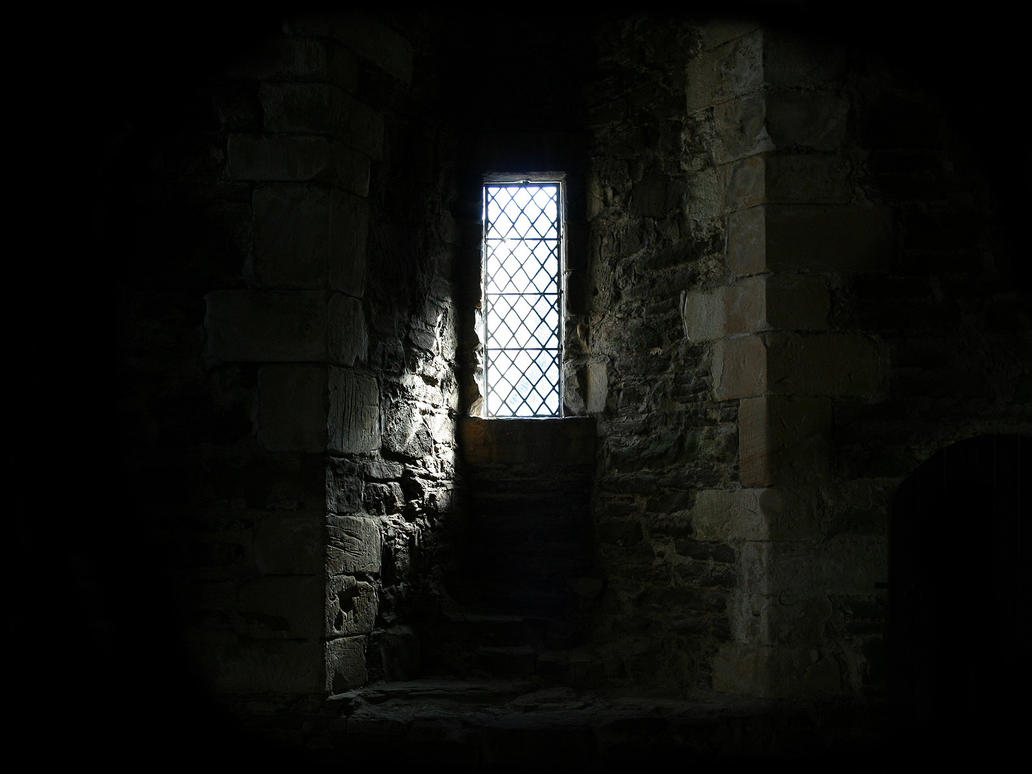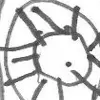partridge chicken
My only complaint about turning my lawn into a wildflower and curated garden is a rabbit like to chomp our asters before they can bloom.
He only ate one and cut down the others and left their buds to decay in the soil.
We do have other asters in the back that are now so strong he can’t do that.
Also one more good thing about the biodiversity thing: everything in my garden is massive this year, and it’s been growing so quickly. The soil is definitely thriving.
i prob don’t need to tell you this but remember to leave the dead plants where they are so that the nutrients can go back into the ground, also seeds
This is especially important when you have trees in your garden. If you remove all grass from your garden the regrowing& and the trees will suck your garden dry of nutrients in 20-30 years.
Remove all of the grass, let it bake in the sun until it dies, and then mulch with the dead grass. Living grass will suck your garden dry of nutrients in a time short compared to 20-30 years.
Rabbits love clover and all legumes actually. So if you got dutch white clover in your lawn they will go for that first. They will be enough to discourage most eating of garden plants. They avoid everything except my sunflower which they have been eating while they are low. Or at least something is.
I think sunflower seeds are just so delicious they get eaten by everything. Squirrels, birds, who knows what all. I can get sunflowers, but this patch of about a dozen sunflowers this year came from about 60 seeds.

I get it. I have been doing packets of seeds to get one or two even when I press into the soil.
I get sprouts and then those get chomped. Everyone loves Sunflowers
I have white clover but they still go for the asters. There’s no clover in the front though.
I also have a groundhog who I think also eats the plants, maybe he’s involved.
I think it’s just the asters are new and relatively low, the established ones in the back don’t get eaten anymore.
Me planting in my garden meant to feed wildlife:

I’ve made peace with it.
Plants are rabbit food, if they die they die and new plants get added.
Looking at the health of the whole garden / ecosystem has made me very zen. Especially when pulling things I don’t want or have too much of. I’ve been trying up transfer some to abandoned areas for things that aren’t common. They usually die but they were going to die when I pulled them anyhow.
My husband laughed at me for pulling weeds and throwing them in the yard, but they ARE the “lawn”, I don’t care if they grow out there, just want to advantage the flowers and food plants in the defined spaces.
I always mow in anything I have pulled into the yard
partridge chicken
Stormlight fan snickering intensifies
They always make my day when I find them. Where I live there’s a lot of abandoned land with good biodiversity (because nobody is around to fuck it up!) and you can hear their broken-fax-machine calls during mating time and then later in the year you might be lucky and find mum and chicks running along some path.
Biodiversity requires manual scything? They can’t use a combine?
Not gonna work on a commercial farm if harvesting costs more than the crop is worth.
I mean, yes, it kind of does. Combine harvesters cut and flatten everything in a field, and kill any animals unfortunate enough to be in their path, which isn’t great for biodiversity.
In modern industrial agriculture, pesticides and poisons and traps kill other plants and animals anyway, so it’s not as relevant.
If you want biodiversity in a ryegrass field, the way this meme shows, you need perennial companion plants and an insect and small animal ecology. So you have to use less destructive forms of harvesting to avoid killing everything in the field.
I don’t know if there are less destructive mechanical harvesting processes available, but showing workers with scythes is a good shorthand to get the point across.
Well yes, but actually no.
The following Ted talk gets presented to you by someone who has been raised in farming (non organic and organic) and is currently studying Agriculture at a university.
Modern agriculture is a very complex system where you have to balance out multiple factors at the same time. Relevant for how you run your farm, which includes how you harvest crops and grass, are factors like what animals (since grass isnt really a part of farming outside of animal based farms) you feed, what is your main goal with making a profit of these animals, what size does your farm have, Efficency, degree of mechanisation, biodiversity and of course being able to run at a profit. Since this whole topic is waaaaaay to complex to summarise in a single Lemmy comment I will not go in detail about every single aspect.
So first of all, what ways do we have to harvest gras? This is usually split into severals steps: Cutting, drying, transporting it to your farm and then storing it. Relevant here are only the cutting drying and transporting. First of all you have to decide in what kind of form you want to store the grass. Do you want to store it as a silage, which is fermenting it, or as hay. If you want to store it as hay you the gras to be long in order to achieve high texture. This can be achieved by using one of these machines to cut it down:
These are quite cheap and also available in bigger versions. They are very good for Biodiversity (they do not kill everything they run over). The downside is, that you do not really break up the structure which leads to increased drying times (you can use other mowers as seen below, but the drying time is still 4 or so days), since you want hay to be as dry as possible. Otherwise if you harvest it to early it can start burning due to heat that gets produced when drying. The problem with hay is, that its quite labour intensive, you hav higher losses of actually usable plant matter as food, due to having to move the hay on the field regularly to ensure it dries good. Also Hay usually gets stored in bales which means, that you have more work to do when feeding it.
The other main way of storing grass is as a silage like this:
This has the advantage, that you can completely mechanise the whole process of handling it and it is quite cost and labour effective at the same time. It is also quite easy to scale the whole production up. When going for silage you usually cut down the gras using one of these two mowers:


These are also the more common forms of mowers. They have the advantage of being capable of mowing more area in less time then the one shown above. When mowing for silage theres also often this part, which I will call a preparer (I dont know the english word) in use:

This damages the plant structure so that drying times are reduced. Both of these mowing variations allow for an additional belt being put behind so that the grass gets put down in a concentrated line for picking it up using a forage wagon or a chopper. This is done, to increase the efficency of transporting the grass to the farm. The big downside is, that these mowing combinations literally shredder everything they go over.
So what ways are there to increase Biodiversity while harvesting grass and what effects do they have? I will mainly go about changing the processes for creating silage, since its the most dominant form.
1: Dont use the listed forms of rotary mowers. This means, that you have to account for additionaly drying time, which when using a preparer Is usually about a day. You also have to do an additional step to bring the gras in a single line to be processes by the chopper, since its the most expensive machine of the whole process.
2: Cut at a latter stage. Usually the grass is cut when it starts to bloom or right before it starts, because thats the time where you have the highes Energy and protein concentration. Cutting at a later stage when the grass isnt blooming anymore means, that you harvest more mass, but that has lower nutritional value. It may also mean, that instead of making 4 (sometimes even up to 5) cuts from the same field you may only be able to cut the grass 3-4 times.
3: Only cut parts of the field. You may also leave some parts uncut so that insects have a place to got to. This is relatively cost effective since it usually doesnt hurt that much when you dont cut a small part of your field. Alternatively you can also make a rotation, where you maybe cut half the field and cut the other half once the already cut part has regrown a bit. This however, means more work and makes harvesting for silage harder/more expensive, since you would have to order machines more often.
4: Cut at night. This seems like a no brainer, but when less insects are around, less insects can be killed. Downside is, that you have increased drying times, since in the night the grass is of course wet and this has to dry of too.
5: Do everything by hand (as you suggested). This is nowhere near being a feasible option. Due to the big scales it becomes impossible to do everything by hand. It needs a huge workforce which isnt really an option for today. This would mean a mechnisation grade of about 1900, where about 33% of people were employed in Agricultural jobs. Today its about 1.2% Source (German)
There is also a fuckton to say about how to increase biodiversity in farming in general, but I do not want to write a whole bachelors work as a Lemmy comment.
So biodiversity is wholly incompatible with running a profitable farm?
Absolutely not.
There are plenty of ways to encourage biodiversity in agriculture other then what this meme shows.
It used to be, for example, that big fields like this would be harvested by machines but surrounded by hedgerows, which were left uncultivated, serving as wind breaks and as habitat for many beneficial insects and animals.
That’s not possible in modern industrial agriculture, because Roundup and other herbicides and pesticides are too toxic - for corn or soybeans, for instance, they plant varieties immune to glyphosate and then dump so much glyphosate on the fields that everything else dies..
But organic farming techniques that don’t soak the soil in poisons can easily leave uncultivated space for the bugs and the birds - and even benefit from it, by, for example, planting native flowers that attract pollinators to the crops, or plants that provide habitat for insect predators that eat the bugs that would eat the crops. Or so on or so forth.
That being said, I think it’s likely the farm in this meme wouldn’t be profitable given current food prices.
But food in the United States is as cheap as it is because industrial agriculture (ie the poison spraying folks) is heavily subsidized by the US government and fueled by deliveries of oil and fertilizer and chemicals from a vast global supply chain.
And it’s not impossible that will change.
Well, the thing is, if you’ve got a whole bunch of biodiversity and you cut down a small patch in the middle of it, where you grow your monoculture and use your big machines and whatnot, that’s when this fuck-biodiversity approach is rather profitable.
But if you scale that up, if a whole bunch of farmers kill biodiversity in the same region, this will obliterate profitability. You need biodiversity for:
- pollination
- enriching the soil (we have no industrial process for creating humus; it’s mostly just earthworms doing their thing)
- pest control (birds and whatnot can eat your pests, if they settle nearby; they won’t settle nearby, if there’s no food for half the year because you’ve killed everything else)
- resilience against pests and climate variations (if your harvest consists out of multiple different plants, then some of them failing from pests or droughts etc. is much less of a problem)
I’m probably forgetting more aspects, and we probably don’t yet know all aspects either. But ultimately, plants have evolved to exist in rich biodiversity. It isn’t just some moral thing to do, to keep that intact. Plants will falter without biodiversity, no matter how much fertilizer and pesticide you pour onto them.
It’s agriculture, there’s always profit.
https://en.wikipedia.org/wiki/David_Brandt_(farmer)
In the late 1990s and early 2000s, Brandt experimented with different combinations and species of cover crops, such as radishes and sunflowers, to improve crop yield and improve soil quality. As a result of these cover crops, Brandt was able to cut back on commercial nitrogen additives, which also saved money. Additionally, Brandt saw less mold and blight and fewer insects among his crops, to the point that he was able to reduce or stop using fungicide, herbicide, and insecticide on parts of the farm.
It’s agriculture, there’s always prprofit.
This depends on to many factors to be universally true. Farming is so incredibly complex, that you can not make such a general statement. If you produce high profit crops for niece markets its much easier to make a profit. However, the whole conventional meat and milk industry is usually running at a loss (at least it has been since about 1-2 years ago where prices skyrocketed and still rise). It also vastly depends on where you are, what machines do you use, what’s the quality of your soil etc.
No one goes into farming, because its easy cash. Farming is only easy cach when you are experienced and grow to massive sizes. All the small to medium scale farms are usually barely profitable or are running at a loss due to low prices (the price that the farmer receives for the product).
It’s agriculture, there’s always profit.
And there’s where I stopped reading. Farming is not an easy business to make money at. How is anyone going to pay for the cost of hand harvesting rye grass?
yep absolutely no hand-harvested crops, just unheard of, nobody makes any money farming those
High value crops like fruit, sure.
Cheap grain crops, you’re outta your mind.
did a tick make this post?
Ah yes, because the recent explosion of tick population is surely because of our biodiversity and healthy ecosystems.
Do you know what the natural predators of ticks are? Do you know what sort of environments they like to sleep and rest and hunt? Do you know what the average American’s response is to finding a burrow on their property? Or their cats’ and dogs’ response?
We truly haven’t learned from medieval cityfolk killing cats because of the black death.
☝️🤓
Do you know what a joke is?
Oh, sure. It’s actually a pretty broad category of stories and statements people can make, but the common denominator is that it’s perceived as funny. Why do you ask?
Hey! Question: what is the circumference of the stick up your ass and what kind of lubrication did you use to get it so far up there?
jokes perpetuate ideas past the critical mind into your sub conscious
Never got a tick from my garden which is left to grow as a meadow, got a few from actually somewhat wild areas though.
Seems like a bitch to separate though
Fuck lawns.






